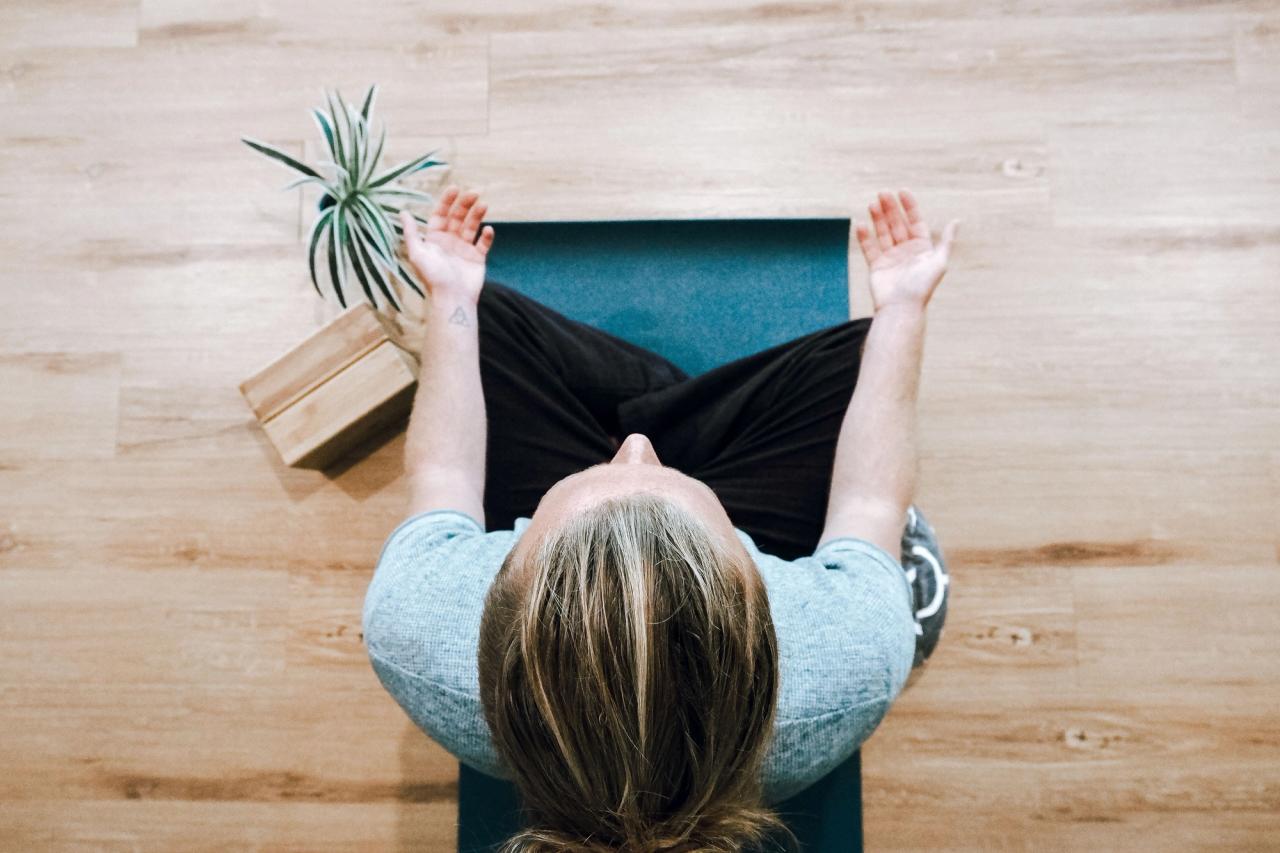A high pace, simultaneous demands, pressure, and chaos characterize many workplaces today. Some call it the "VUCA world, " an acronym for volatility, uncertainty, complexity, and ambiguity. The fact is that many of us face a certain amount of stress every day. 57% of workers reported feeling stressed daily, up by eight percentage points from the year prior and compared with 54% of people who think that way globally, according to Gallup's 2023 report.
The frightening thing is that when we are in the middle of a seeming storm, we feel we have no choice, but to "keep on going". But it doesn't have to be that way. Mindfulness can teach us how to organize ourselves, work better together, and how to cope with daily situations more sustainably. So let's take a closer look into mindfulness – what it is and how it can help us in our daily work lives.
Benefits of Mindfulness - For the Individual, the Team, And the Organization
In a workplace setting, mindfulness has substantial beneficial effects not only on individuals but also on the team, and organization. Several studies have shown that mindfulness has an array of positive benefits for individuals, including:
- Physical well-being and health
- Stress reduction
- Increased ability to focus and concentrate
- Improved cognitive function – including better memory, learning ability, and creativity
- Better emotional regulation
- Increased empathy and ability to expand perspectives
In the words of Ellen Langer in her article "A Call for Mindful Leadership":
"In more than 30 years of research, we've found that increasing mindfulness increases charisma and productivity, decreases burnout and accidents, and increases creativity, memory, attention, positive affect, health, and even longevity. When mindful we can take advantage of opportunities and avert the dangers that don't yet exist. This is true for the leader and the led."
These benefits can have a ripple effect and also benefit colleagues, customers, and leaders in practicing mindfulness themselves. Numerous research studies have proven this to be accurate and include some of the following benefits:
- Heightened level of empathy towards colleagues, customers, and others in general
- Better collaboration
- Fewer conflicts
- Sense of shared accomplishment
- More productive meetings
On an organizational level, several corporate and organizational benefits of increased mindfulness have been proven in numerous research studies, summarized in the following:
- Reduced costs of staff absenteeism caused by illness, injury, stress,
- Improved productivity and self-reported improved overall staff well-being
- Reduced staff turnover and associated costs
- Enhanced employer/employee and client relationships
- Reduced health insurance premiums for the business
- A visible and tangible employee well-being program
- Increased empathy and better team collaboration to benefit of the everyone
So,What is Mindfulness?
To be mindful means paying special attention to a situation, thought, and emotions in oneself and/or others. Mindfulness as a concept is derived from the Pali word "sati". The word sati can also be translated as awareness, attention, or remembering. This is why "being mindful" means much more than being attentive in the present moment - it is a broader concept.
Mindfulness is an ability to be in the moment – noticing what is going on around you and within you – with an open and non-judging mind (or if judging, knowing that you are judging and that that is not part of a pure, clean, neutral "reality" – whatever that is).
The above was how one of the early Western pioneers within the field, Jon Kabat-Zinn, defined mindfulness back in 1990 in his first book "Full Catastrophe Living."
Since then, many Western practitioners have introduced mindfulness in the workplace, with resources continuing to grow.
The Mindful Workplace
A mindful workplace - full of mindful individuals - is characterized by having:
- A clear intention,
- Focused attention, and
- An open and kind attitude
The above is how Pernille Brun and I described a mindful workplace in our book "Mindfulness in Organizations." Underneath each headline, we identified seven concrete behaviors or actions leading to a heightened state of mindfulness if practiced and nurtured well.
When introducing mindfulness in the workplace, ask yourself which areas you are in front of and where you might be a little behind. To get started, ask yourself some questions:
- Do you have room for breaks when things get overwhelming?
- Do you spot strengths well?
- Do you have a clear higher purpose and a holistic strategy?
Within each area, you can then decide what you need to nurture to heighten your organization's level of mindfulness.
The Individual Practice of Mindfulness
Let's now take a closer look at the individual practice of mindfulness.
Practicing mindfulness is putting our full attention into the moment – into its core, its essence. The tricky thing, though, is to do just that. This trickiness is why people train and practice mindfulness over time - it does not happen overnight.
The core parts of mindfulness practice are:
- Setting the intention
- Noticing and harnessing your attention
- Practicing specific attitudes
The mindful reader might have noticed that, like organizational mindfulness, individual mindfulness is about intention, attention, and attitude!
Setting Your Intention
The first part of any mindfulness practice is setting the intention. You may sit down to practice, or you may decide you want to practice mindfulness, and the first thing you should ask yourself is: Why? What is it I would like to gain from this practice? Why do I need it? What is my intention with this practice right now?
It might be as" simple" an answer as to "find inner peace" or "understand others better" (which is a core part of Google's mindfulness program called Search Inside Yourself). Prepare yourself to train, practice, and be in the moment by making sure your intention is clear and directed. However, do not strive for this to happen (non-striving is a particular attitude we train in mindfulness - more on that later).
Noticing And Harnessing Your Attention
The next step in mindfulness training is to discipline your mind. During the day - stop and notice:
- Where is my attention - right now?
- Is it where I want it to be? If not - can I bring it back?
The above is mindfulness in its essence. Go through the working day with full attention. Not on an automatic pilot, where we don't notice what is happening within and around us or "where life is taking us." Thoughts, emotions, and bodily reactions might take us away from the moment. They tend to "steal our attention." And we are not aware of the consequences of having our attention here or there. In that case, we might end up on automatic pilot. We may think that life is running away from us— that we are out of sync with the present moment, and that we are out of touch with ourselves.
But we can stop the automatic pilot – if we are mindful.
The fact that we can harness our attention and direct it away from where our automatic reactions take us toward more crucial matters makes us human beings. We do, in fact, have that choice - if we are aware of it. Reading this insightful article by our colleague, Eugenia Kolomites, a coach based out of Kiev in Ukraine, proves the point: Even in the midst of a very difficult situation, she deliberately chooses where to put her focus and thus manages to build up resilience, even in the midst of a a very chaotic, challenging and hard time.
However, harnessing our attention requires a disciplined mind. It requires that we are aware that we can choose where it would be wisest to have our attention. And it requires our "brain muscle" to harness our attention.
When we practice mindfulness, we practice keeping our attention where we want it to be. In other words, if our mind wanders from where we want it to be, we gently bring it back. Again and again. If we notice our attention is not on the person sitting in front of us, we bring it back.
It is like training a muscle. In the beginning, it is tough, and you get tired. Your mind wanders away— you struggle to stay focused and attuned, and you forget to stop and notice the moment. But with practice, your attention muscle grows. You get better and better at detecting and being in the moment, at bringing your attention back when it wanders. It is just like physical training: you get in shape with practice.
Being aware of where your attention is also counts for what you focus on in the organization. Are you merely noticing mistakes - what goes wrong? Or do you deliberately try to also focus on all the things that actually work, and make an organization flourish?
Practicing Specific Attitudes
Mindfulness is also about deliberately practicing to meet life, yourself, your colleagues, and the moment itself with:
- Acceptance
- Curiosity
- Patience (non-striving)
- Trust
- Openness (non-judging is part of this) and
- Kindness
Just like harnessing our attention, we can practice these core mindsets throughout the day - and by doing so, we build up psychological safety.
Suppose we have judged other people or a situation too soon. In that case, we can practice openness: Giving other people a new opportunity, looking at the situation again: is there more to see and learn here? What else is there to experience?
If we are bored in a situation or with another person, we can deliberately try to be curious. For example, ask yourself questions such as: what is it I need to learn here? What can I learn from this person or situation?
And we practice being kind towards ourselves and others. If we notice we talk down to ourselves or think badly about others, we remind ourselves that we are all human beings, trying to do our best every day.
When we get impatient waiting in line, with another person, or when we can't solve a problem – we can practice acceptance, patience, and non-striving - deliberately.
We might even be thankful for the chances we get to practice. We leave things to be - and see what happens. We accept things as they are - and of course, try to change them if need be, and we need more time to solve our problems. Sometimes time does - and sometimes it does not. The trick is to learn when to let go and let be and when to act. We should work on the necessary things, but learn to let go when this is most beneficial. Getting to know the difference is part of mindfulness training.
Parts of the practice, where we practice specific attitudes, could also be called training in the "beginners eye." Training our ability to see things, ourselves, and other people from new angles and new perspectives. We practice looking at ourselves, others, and the world in a non-judgmental, open, and inquisitive way, just like a child would do - before experience and life have taught them to categorize and judge everything that is going on around them.
What if? What is? What could be?
These are core questions to ask oneself when practicing mindfulness.
Everyday Practice And More Formal Practice
We can integrate the above practices into our everyday (working) lives. However, to be mindful under pressure, you need to train with more formal practices. These include regular meditation exercises like tuning into your breath, doing a body scan, or doing ''loving-kindness'' meditation.
These meditation exercises bring you calmness and fill you with positive feelings. They also cultivate beneficial physical and emotional inner states – which will also affect those around us. When we are calm and loaded with positive feelings, others around us are affected positively.
In more formal mindfulness training, we tune into ourselves in a very attentive way. We notice our breathing, emotions, and thinking and how it changes all the time. We see and accept things as they are – we don't necessarily try to change our breathing, emotions, or way of thinking. Very often, they vary by themselves, though. If we notice that a particular form of breathing or thinking is not beneficial, we can try something different.
Different parts of formal mindfulness practices have various benefits and effects. For instance, in one study, researchers found that:
"Breath-based meditation (in which you focus on your breath) helped people better understand others' perspectives cognitively, while loving-kindness meditation (in which you imagine sending kindness and goodwill to others) made people more able to feel what others were experiencing, boosting empathy and connection to others." (Cameron & Hafenbrack, HBR, Dec. 2022)
Summing up
We have only scratched the surface when it comes to mindfulness. But we hope you found this article inspiring and that it has sparked your curiosity regarding learning, implementing, and practicing mindfulness at the workplace. If so, we hope you will contact us at Session to learn more. We are ready to share stories, offer advice, and lead processes leading to more mindful workplaces and individuals. The journey starts with your first step - feel free to book us for a meeting to get started.













